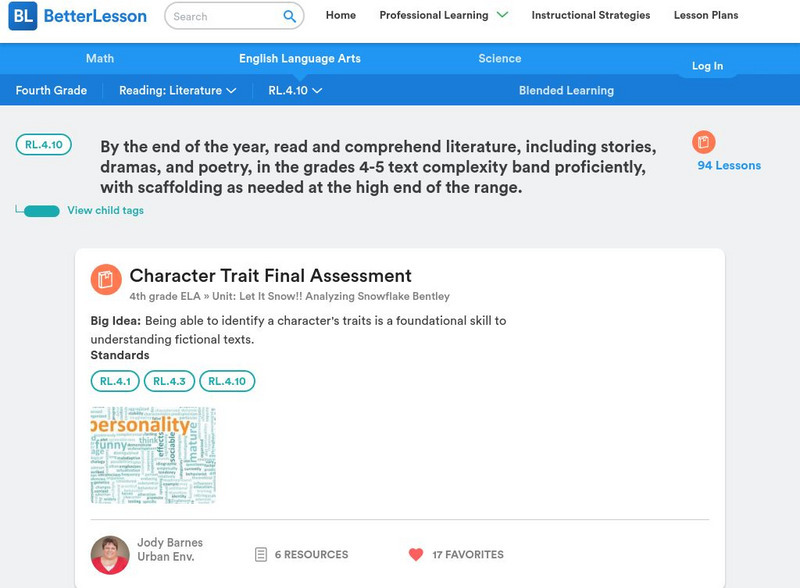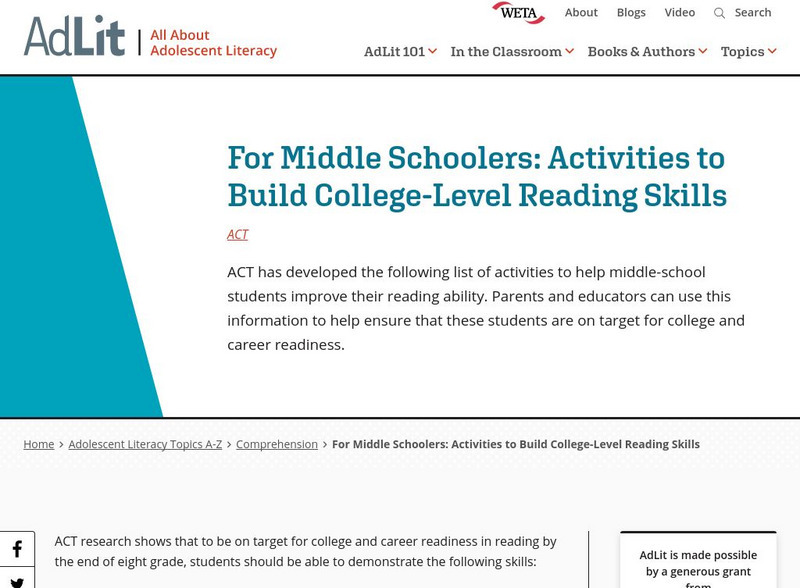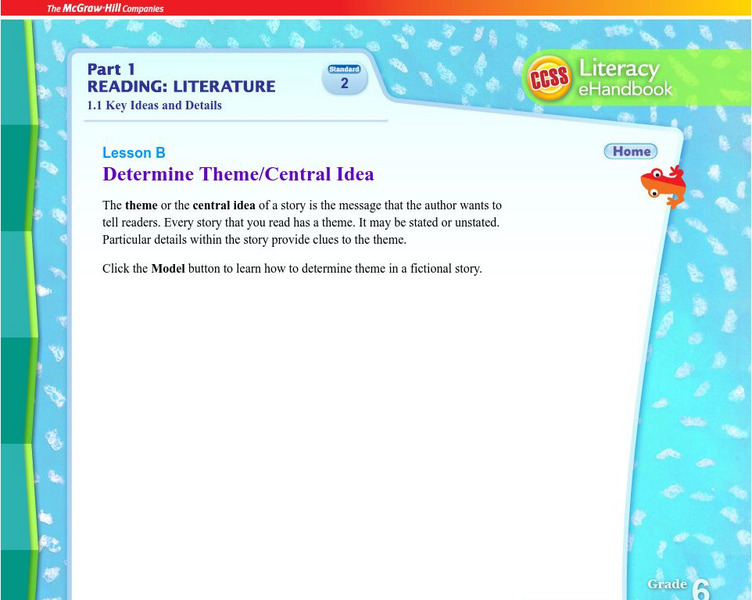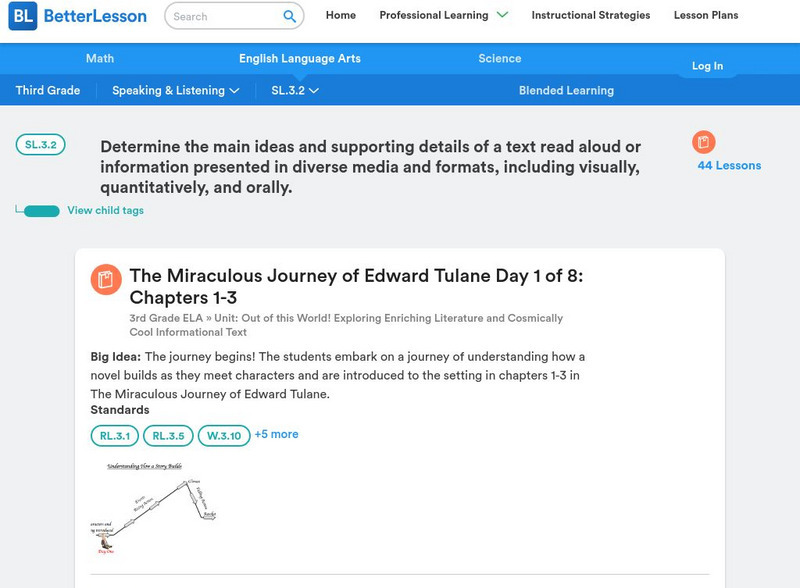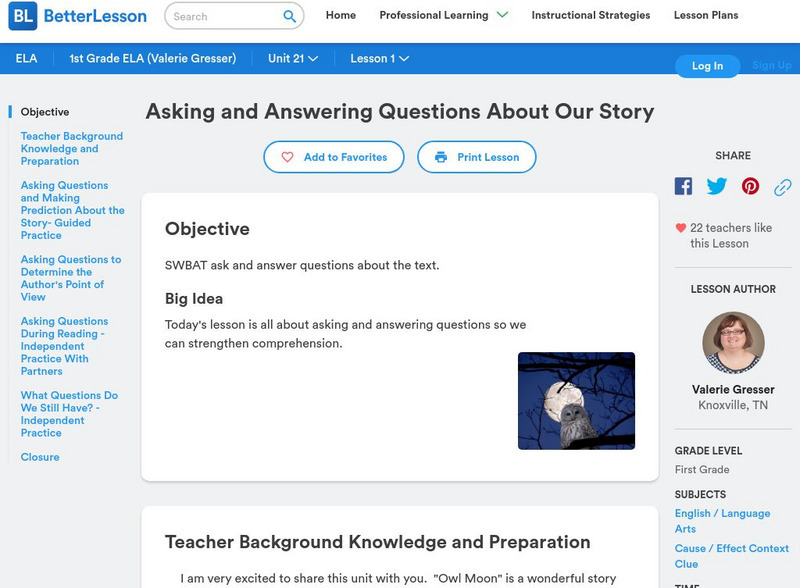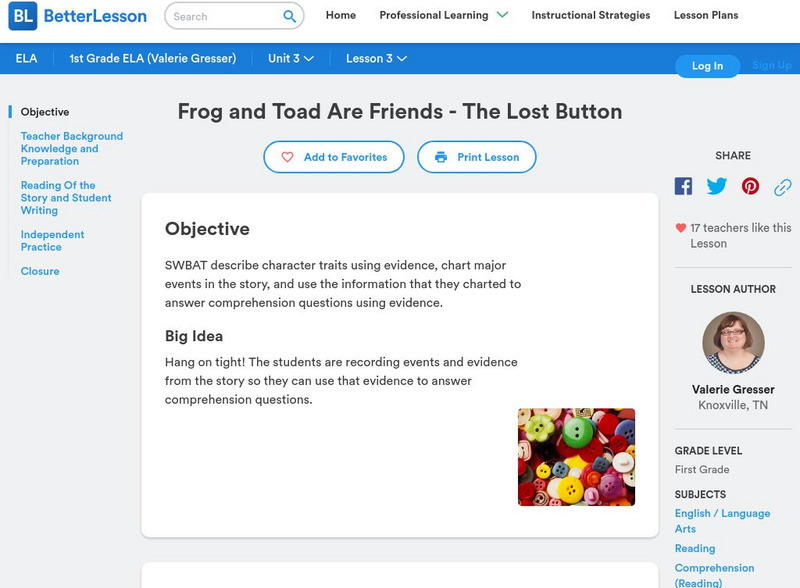Other
Santa Monica College: Words Commonly Confused
This site contains a list of commonly confused words with practice activities to help in learning how to use them correctly.
Better Lesson
Better Lesson: Rl.4.10: Read and Comprehend Literature in Grades 4 and 5
Links to 94 lessons and activities that build student skills in standard RL.4.10: By the end of the year, read and comprehend literature, including stories, dramas, and poetry, in the grades 4 and 5 text complexity band proficiently,...
AdLit
Ad lit.org: For Middle Schoolers: Activities to Build College Level Reading Skills
ACT has developed this list of activities to help middle-school students improve their reading ability. Parents and educators can use this information to help ensure that these students are on target for college and career readiness.
Other
Ncrel: Reading Strategies: Before, During, and After [Pdf]
This page provides a detailed chart to aid students' understanding of texts. It goes through the steps of pre-reading, during reading, and after reading, outlining what students should be thinking about as they interact with a text. This...
Mind Tools
Mind Tools: Reading Strategies
This site from Mind Tools reviews six different strategies to help you read more effectively. RI.11-12.10a Text Complexity
E Reading Worksheets
E Reading Worksheets: Point of View Activities
This learning module provides assorted activities for teaching and reviewing the concept of point of view with students. The following activities are provided: point of view comic strip; point of view flash cards; point of view practice...
E Reading Worksheets
E Reading Worksheets: Text Structure
This resource focuses on text structure by defining the types of organizational patterns and providing examples of each. These are followed by a list of links to practice activities on text structure and main idea, as well as some videos.
Other
New York State Library: Student Activity: Primary Versus Secondary Sources
Read about the Railroad Strike of 1877 using three excerpts from textbooks and three original newspaper articles. Compare and contrast the information in the primary and secondary sources.
Curated OER
Mc Graw Hill: Reading Literature: Determine Theme/central Idea
A definition of theme or central idea along with a link to a practice activity. CCSS.ELA-Literacy.CCRA.R.2
E Reading Worksheets
E Reading Worksheets: Summarizing Worksheets and Activities
In this instructional resource, students will learn more about summarizing texts. Worksheets and PowerPoint lessons are provided to reinforce understanding about ways to summarize nonfiction texts and to identify main ideas. This module...
Better Lesson
Better Lesson: Sl.3.2: Determine the Main Ideas and Supporting Details of a Text
Links to 44 lessons and activities that build student skills in standard SL.3.2: Determine the main ideas and supporting details of a text read aloud or information presented in diverse media and formats, including visually,...
Better Lesson
Better Lesson: Sl.4.1a: Come to Discussions Prepared
Links to 36 lessons and activities that build student skills in standard SL.4.1a: Come to discussions prepared, having read or studied required material; explicitly draw on that preparation and other information known about the topic to...
Alabama Learning Exchange
Alex: Identifying Sequence of Events Using Dr. Seuss
After listening to a reading of Dr. Seuss' Bartholomew and the Oobleck, students use graphic organizers and comic strips to practice sequencing. In a fun activity, small groups follow directions to make oobleck.
Better Lesson
Better Lesson: Asking and Answering Questions About Our Story
Today's lesson is all about asking and answering questions so we can strengthen comprehension.
Better Lesson
Better Lesson: Frog and Toad Are Friends the Lost Button
In this lesson, students will record events and evidence from the story "Frog and Toad Are Friends" so they can use that evidence to answer comprehension questions.
Better Lesson
Better Lesson: /C/ Like Columbus
A historical figure helps students recognize a specific initial sound, the hard /c/.

